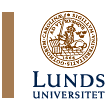

|
Panel No. 20Panel Title: Rural Livelihood and Social Capital: The Case of Bangladesh and South AsiaConvenor: Dr.
Rita Afsar, Bangladesh Institute of Development Studies, Dhaka,
Bangladesh Tuesday 6 July, 13–18 Panel Abstract: It is now over a decade that social capital has been seriously considered as a determining factor in economic growth and development. The reasons for which social capital is gaining increasing recognition in the development discourse include among others the cost minimization strategy or lowering transaction cost, mutually beneficial action or collective action leading to positive-sum-outcome and in this process social capital enables accumulation of other types capital for poverty alleviation. This panel shall address the social, inter-personal, cognitive and collective aspects involeved in the process of poverty alleviation and the development discourse while critiquing the limitations of the grand econometric and unidimensional models of poverty alleviation and people's agency. The themes it intends to cover includes: understanding poverty through social stratification, critical assessment of the conceptualization of poverty and its measurement and examining the interactive discorse between poverty and development, examining systematic causes of poverty and exploring how social capital can add to the understanding of poverty, mapping social capital across space and cross-sections of population, role of NGOs in mobilizing social capital and enhancing changes in gender relations and how interaction between cultural structure and mental make up shapes and human behaviour and exert influence in the coping mechanisms.
Papers accepted for presentation in the panel:Paper Giver 1: Dr. Monirul I Khan, Department of Sociology, Dhaka University, Bangladesh Paper 1 Title: Broadening of the concept of Poverty: Consensus and Polemics Paper Abstract: By way of conceptualisation the notion of poverty has acquired certain meaning conventionally grasped in terms of food/nutrition intake and income slot. While there is strong argument in favour of the conventional notions expressed in its superiority of quantification, comparability, applicability to the micro-situation and others the critique are no less strong in expressing their reservation about it. In the interactive process of liking and not liking or dealing with the issue of human deprivation the notion of development and others have emerged. This paper has traced the conceptual outline of some of these notions with strong relevance to the understanding of human deprivation and distress. Following the brief discussion on HPI, HDI, WDI, empowerment, social exclusion and others it identified the elements of agreements and the disagreements. It was found that there were enough reasons to look for a wider perspective and broaden the conventional notion of poverty complementing with equally important notions of development and empowerment. Paper Giver 2: M.A. Shantha
Wijesinghe, Senior Lecturer, Department of Geography, Paper 2 Title: Understanding Poverty through Social Stratification: A Case Study from Akkarawatta Village in the Central Province of Sri Lanka Paper Abstract: Poverty in many ways is a relationship and a relative phenomenon (I am poor because you are rich)‚ and has to be looked at holistically as it is often psychological and sociological. It is essential to review and analyse it in different ways to understand the reality of ´poor`. Thus, identification of ´poor` through social stratification may be useful and essential in understanding their nature and the reality based on various criteria. Here, it is also important to examine why some have become poor while others are rich. Answer to this question is the examination of processes leading to poverty and social inequality. Therefore this paper attempts
In order to achieve the above objectives qualitative research techniques were completely used. Social stratification for demarcating ´poor` was done according to the people‚s view in the selected village. In understanding the nature of poor, their inherent characteristics and the processes leading to their poverty villagers‚ own ideas, concepts, language, mental picture, researcher‚s field experience and the voice of the poor were taken into consideration. Full paper to be downloaded (as a pdf-file) Paper Giver 3: Dhammika Herath, Ph.D. Student, Department of Peace and Development Research, Göteborg University, Sweden Paper 3 Title: Social Capital and Poverty: An analysis of the efficacy of the social capital approach to understand a culture of poverty situation Paper abstract: This paper is based on a research study on the intergenerational transfer of poverty in Sri Lanka. The location is a tea plantation in the District of Kandy. The tea plantation workers are one of the poorest groups living in absolute poverty. This study focused on how the intergenerational transfer of poverty has been supported by a culture of poverty and the absence of social capital. While the study underlies the significance of the culture of poverty as still a valid concept to understand poverty, it also highlights other social and cultural dynamics of poverty including low levels of social capital which impede the development and mobility of the poor. It explored many Systemic causes of poverty which lies beyond the control of the individual and illustrate how the concept of social capital can add to our understanding of poverty. Full paper to be downloaded (as a pdf-file) Paper Givers 4: Rita Afsar, Senior research fellow and Head, Human Resources Division, Bangladesh Institute of Development Studies, Dhaka, and Alia Ahmad, Associate professor, Department of Economics, Lund University, Sweden Paper 4 Title: Mapping Social Capital Across Space and among Socio-economic Groups in Rural Bangladesh Paper Abstract: There are few empirical studies in Bangladesh that mapped the distribution of social capital across space or socio-economic groups. In other word, there is a gap in understanding on the determinants of social capital and its multiple dimensions and entities. It is also rare to come across studies that looked into the linkages between social capital, economic growth and the role of exogenous variables such as NGOs and the level of infrastructure development. There is a proliferation of studies on NGOs and social capital but there are few studies that deal explicitly with the interaction between the two. How NGOs have organized community members to promote actions that benefit individuals and reduce poverty has been widely researched but less attention has been paid to the role of NGOs in addressing collective action problems building on social capital. The purpose of this paper is to map the distribution of social capital in villages that are endowed with better infrastructure and those, which remained backward, and across different socio-economic groups, NGO versus non-NGO members. Paper Giver 5: Dr. Sunethra Thennakoon, University of Sri Jayewardenepura, Sri Lanka Paper 5 Title: Rural Livelihood Strategies and the Five Capitals: A Comparative Study in the Selected Villages of Sri Lanka Paper Abstract: Regional imbalances in socio-economic development exist in Sri Lanka and these imbalances are caused by the availability of livelihood assets, level of government development intervention and the variation in physical environment. The concept of sustainable livelihoods is increasingly important in research about regional development, poverty alleviation, rural agriculture development and rural resource management. As poverty is multidimensional, it can be reduced by increasing people‚s livelihood assets (such as social, physical, human, financial and natural). The study is based on primary data collected from four villages with special emphasis on capital assets and strategies. Participatory techniques are used to characterize, rank and score capital assets of rural livelihood. This paper tries to understand the situation of rural livelihood strategies, which depends on the availability of livelihood assets. The livelihood status of villages is summarized in terms of a pentagon depicting the five assets and marked differences were observed within and between villages. Villages those were close proximity to Colombo Metropolitan Region (CMR) had highest status of livelihoods assets except natural and social. Contrast situation apparent in the villages those distant from CMR of Sri Lanka. The study also highlights the implications for policy for sustainable livelihoods. Full paper to be downloaded (as a pdf-file) Paper Giver 6: Manonita Ghosh, MA student at the Department of Anthropology , University of Western Australia Paper 6 Title: Social capital and postnatal depression among South Asian women Paper Abstract: This paper considers cultural differences related to mothering and challenges current studies that say it is either biological or social factors, which contribute to postnatal depression. In contrast, Iit is argued that a constellation of symptoms which are defined as depression in the Western society as an illness, are seen as a part of life to South Asian people because their cultural system understands and interprets those symptoms differently. Here South Asian migrant women who were born in either Bangladesh or India and living in Western Australia were interviewed between their two and twelve months postnatal period, in order to see how these women locate themselves with regard to issues of economic insufficiency, lack of supportive rites and rituals surrounding childbirth, having little or no community support and isolation from family. It explored the social capital factors of postnatal depression through an analysis of the in depth interviews. The interrelationship between the extrapersonal (cultural structure) and the intrapersonal (mental structures) is particularly significant n understanding culture and human behaviour. The culture, to which a person belongs, defines how that person will experience the symptoms. Culture allows its people to attach to their symptoms by providing them with relevant symbols. Thus people abreact their pain and, using a pre-given cultural symbol, express and bring order to and hence some control over their psychic conflicts. Full paper to be downloaded (as a pdf-file) Paper Giver 7: Naresh Singh, Associate Professor (Entrepreneurship, Micro-Finance & NGO Management), Narsee Monjee Institute of Management Studies, Deemed University, Mumbai, India Paper 7 Title: Perspectives on Emergence and Growth of Micro-Finance Sector in India Paper Abstract: This article is based on the premise that poverty has its own culture. Social system and sub-systems of this culture are built on exploitation. The rich are exploiting the poor by putting them into a debt-trap of money-lending system. This system exists everywhere in the world wherever poverty exists. The poor people need money for their survival and as a result of it they become the part of the vicious circle of poverty where at one time they approach to the moneylenders and the other times to formal financial institutions. Micro-finance is a middle path in which poor people can mobilize their savings, link it with credit and finally become self-employed. In the present paper an attempt has been made to understand the emergence and growth of micro-finance at global level in general and in India in particular by using different perspectives and their interpretations Full paper to be downloaded (as a pdf-file)
SASNET - Swedish South Asian Studies Network/Lund
University
|

